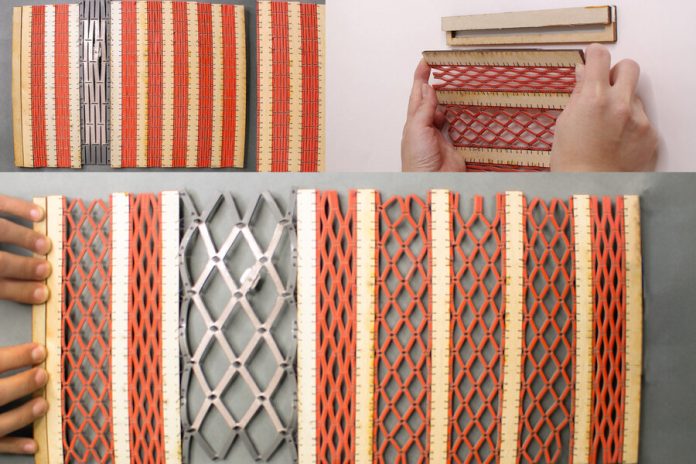
MIT researchers have created a new kind of antenna that can physically change shape, allowing it to adjust its frequency range on the fly.
This “shape-shifting” design could make wireless communication and sensing devices far more versatile, without relying on multiple antennas or complicated moving parts.
Traditional antennas are fixed once they’re made—they can only send and receive signals in a specific range.
But the MIT team built their antenna out of metamaterials, specially engineered materials whose properties depend not just on what they’re made of but also on the way their components are arranged.
By stretching, bending, or compressing the antenna, its shape changes and so does the frequency it uses. These changes are reversible, meaning the antenna can easily switch back and forth between states.
That flexibility opens up new possibilities. For example, a single reconfigurable antenna could adapt to different communication standards, adjust to environmental conditions, or even act as a sensor.
Because the antenna’s resonance frequency shifts with shape, it can detect physical movements. Imagine a device that tracks someone’s breathing by sensing how the antenna’s frequency changes as their chest expands and contracts.
The researchers, led by MIT mechanical engineering graduate student Marwa AlAlawi, designed their system using auxetic metamaterials, which can deform into multiple geometric states.
They created what they call a “meta-antenna” by layering a flexible dielectric material between two conductive layers.
The design looks simple, but it required creative solutions. Conductive materials usually break down when stretched too far, so the team coated the structure with flexible acrylic paint to protect its hinges and extend its durability.
Tests showed the meta-antenna could survive more than 10,000 compressions.
To make the technology accessible, the team also developed a design tool that lets users customize their own meta-antennas. A user can set parameters such as patch size, thickness, and shape, and the tool automatically simulates how the antenna will perform.
The antennas can then be fabricated with something as simple as a laser cutter and conductive spray paint.
The researchers demonstrated how these antennas could be used in real products. They created smart curtains that adjust lighting inside a room and headphones that switch seamlessly between noise-canceling and transparent modes. In the headphones, bending the antenna shifted the resonance frequency by 2.6 percent, enough to trigger the mode change.
Because the antennas can be patterned onto almost any surface, they could one day be built into smart textiles for health monitoring, wearable devices, or other applications where flexibility and adaptability are essential.
Looking ahead, the team hopes to expand their work into three-dimensional designs, experiment with new metamaterial patterns, and improve durability even further. The research will be presented at the ACM Symposium on User Interface Software and Technology in Busan, Korea, later this year.



